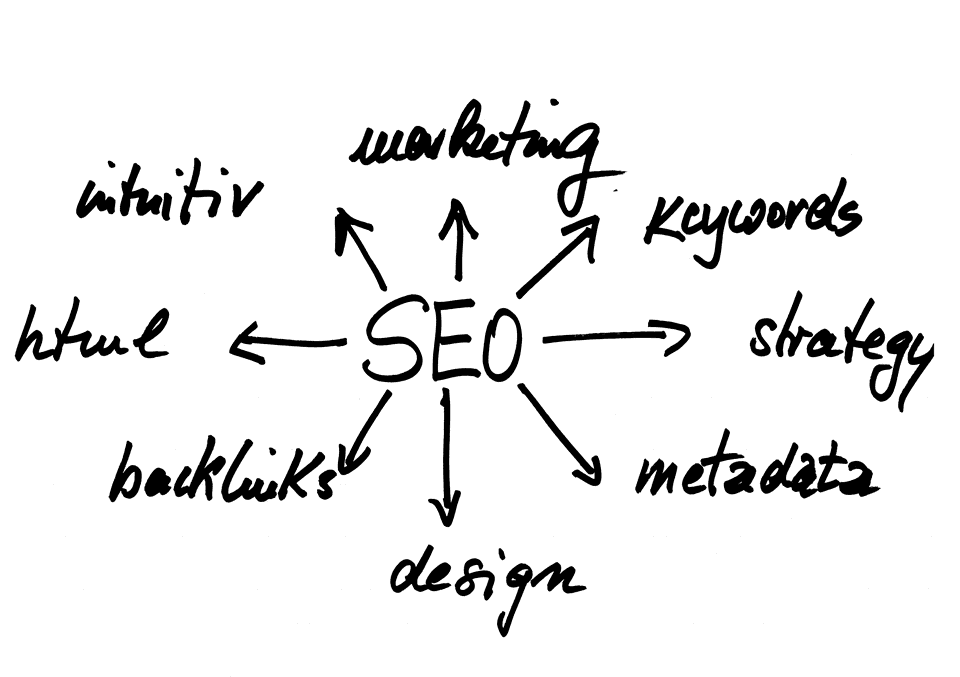What is local SEO?
Local SEO (Local Search Engine Optimisation or LSEO) is similar in the way of regular SEO that it uses organic (unpaid) activities to improve visibility on search engines. Only for Local SEO, you focus on targeting local searchers. This is beneficial for shop front and service-based businesses looking to use their website to grow their business.
Localsearch
There are three main types of SEO activities; on-page, off-page and technical SEO. On-page SEO is what you do to your website (front and backend) to help improve your visibility on search engines, while off-page is what you do outside of your website. Technical SEO is sometimes referred to as backend SEO, but involves working on the backend of the website to reduce code, increase speeds, optimise security, etc. to help influence search results.
We’ve put together a list of on-page and off-page local SEO strategies you should look into to help ensure potential customers near you are seeing your website.

10 Easy Ways to Improve Your Local SEO Results
SEO is SEO. Sure, local search optimisation has a few particulars to help you out, but if you’re not focusing on SEO as a bigger picture, you’ll struggle to get ahead. These are the top things people often forget about for optimising their website for search engines.
1. Ensure your website is responsive.
In 2015, Google released an update where a website not being mobile responsive (so a website that can adapt to work well for a user on any device) would potentially have poorer local SEO ranking results. With mobile web browsing increasing every year, Google has since started to crawl the mobile version of some website before the website version.
Unfortunately, many websites are still not mobile responsive and their organic performance suffers due to this.
Signs you have a non-responsive website:
- Text, images and videos running off the screen.
- Buttons not appearing or being where they shouldn’t be.
- You can’t navigate easily from page to page.
- Website is unusually slow on mobile devices.
- The users receives errors only on mobile.
2. Optimise your content.
Content is one of the big focuses of SEO specialists and it takes a certain level of restraint to get it right. In general, you want your content to be high quality with at least 500 words (at an absolute minimum) for your most important pages.
How do you optimise website content for local search? This is where you need to get friendly with keyword tools like the Google Keyword Planner. In tools like this, you can look at how many people search for specific phrases in your area (note: ensure you narrow down to location). For example, your current website homepage focuses on the keyphrase ‘hairdressing in Fakeville’.
Your other option is to hire a professional content writer or ensure one is included in your website package to help you out.

3. Do an image audit.
Do the images on your website really impact SEO? YES, and there are multiple ways they do it.
Firstly, Google loves a quick-loading websites. Images that are too large can slow down your website speed, which can have a negative impact on your search engine results. How do you shrink your image size? Do a quick Google search for an image compressor and run your images through it. Generally speaking, anything under 150kb will be alright. It’s also handy to know that PNG files are normally larger than jpeg.
Secondly, you can optimise your images for search. By adding alt tags to your images when you add them to your website, you can hopefully get them found in Google images when people search for the terms used. This can be a great way to use keywords, if they are relevant to the image. For example, if you had a picture of your team of plumbers, you might add the alt text ‘123 Plumbing team of plumbers in Fakeville’.
4. Focus on providing a good user experience.
We mentioned user experience in ensuring your website is responsive. However, your website should be easy for people to use however they’re using it, including on computer. This is even more important with the June 2021 Google Page Experience Ranking Update. The update will see Google ranking websites based on page speed, user experience, stability and content.
User experience (UX) is very important for a website as it ensures people can easily use your site, therefore want to stay. Things like pop-ups, hard-to-use menus, buttons not linking to where they should, font and images being too large or too small, hard-to-read font colours, etc, are all website UX pet hates you need to avoid.
When users like your website and stay longer, it tells Google you’re answering their search query. As you’ll see in the next point, being noted as a trusted expert with authority is amazing for your SEO. Read on to find out more.

5. Improve your off-page SEO.
Google is in the business of providing the best information to a user for whatever they’re looking for. They will judge people on their expertise, authority and trust, which is known in the industry simply as EAT. Your off-page SEO activities are what will help build all of these things, if done right. We have some more specifics about the type of off-page activities you should be running below.
6. Be consistent with your NAP.
Okay, this is one of the easiest things about SEO to explain. NAP is your business name, address and phone number and wherever this is located on the internet is known as a NAP citation. Your NAP should be the exact same in every single place it is shown online.
Why this is important is that Google uses your NAP to identify your business. If you list your emergency mobile number on your Google My Business but list your landline only on Localsearch, Google will have a little bit of trouble matching either listing as yours. As Google’s job is to show the most relevant information to a searcher’s query, if they can’t 100% match you and they can someone else, they’ll choose them.
7. Optimise your Google My Business profile.
When you search for businesses on Google, you may see a rundown of their information, including images, blogs and contact information, on the right-hand side. Or, when you search for businesses in your area, you may see a separate section towards the top, under the Google Ads. These are Google My Business (GMB) listings—and they’re very important for local search results.
Google My Business listings are shown when Google can confirm your business listing is an exact match for what the person is looking for. It attracts the eyes and boom, you have a new lead. Okay, maybe it’s not that easy but we’re here to give you a few tips on optimising your GMB.
- Regularly add blogs, product updates, offers, etc, using as much description as you can provide in the text box allocated.
- Use your product and services tags under the Info tab.
- Add images of your workplace, naming the files before you upload them with your business name and location, or whatever is relevant.
- Include all your locations, if you have multiple.
Don’t have a GMB listing? No worries. Give us a quick call on 1300 36 0867 and we can set yours up for you.

8. Get in control of your online reputation.
Who better to tell Google how good you are than your actual customers? You should be encouraging as many happy customers as you can to leave you online reviews on your Localsearch and Google My Business listings, Facebook and whatever other platforms you are. Spread the love and aim for 4 stars or higher.
An easy way to increase your number of positive reviews and limit your negative submissions is by using an online reputation manager. This tool lets you mass email your customers asking if they could rate you out of 5 for the product or service they received. They are linked to a landing page, and if they click 4 or 5 stars, they’re asked if they’d like to leave a review. Any people giving you 1, 2 or 3 stars are given a feedback form to deal with the issue offline.
9. Create a backlink network.
Backlinks are links to your website on someone else’s website. However, not all backlinks are created equal. You want to build a network of quality backlinks on websites Google already loves to build your authority.
An easy way to do this is by using online business profiles, such as being on localsearch.com.au. We’ve listed our favourite FREE backlinks in this handy guide for you.
10. Utilise a Google My Business Partner.
Okay, firstly, well done for getting to the bottom of this article. SEO and LSEO are pretty tricky topics and they can be a little boring if you’re not as interested in how to get your website to succeed as you are in it actually doing it. Working with code, content, images, GMB listings and the mountain of things we listed below is time consuming and it can be tedious if you’re not 100 percent confident in what you’re doing.
We’re here to help. Localsearch’s complete digital marketing service is here to ensure your business is seen, trusted and connected everywhere you want it to be online. Discover more about our services or get in touch today.
Subscribe to the Localsearch Digital Newsletter to receive tips like this and more straight to your inbox!